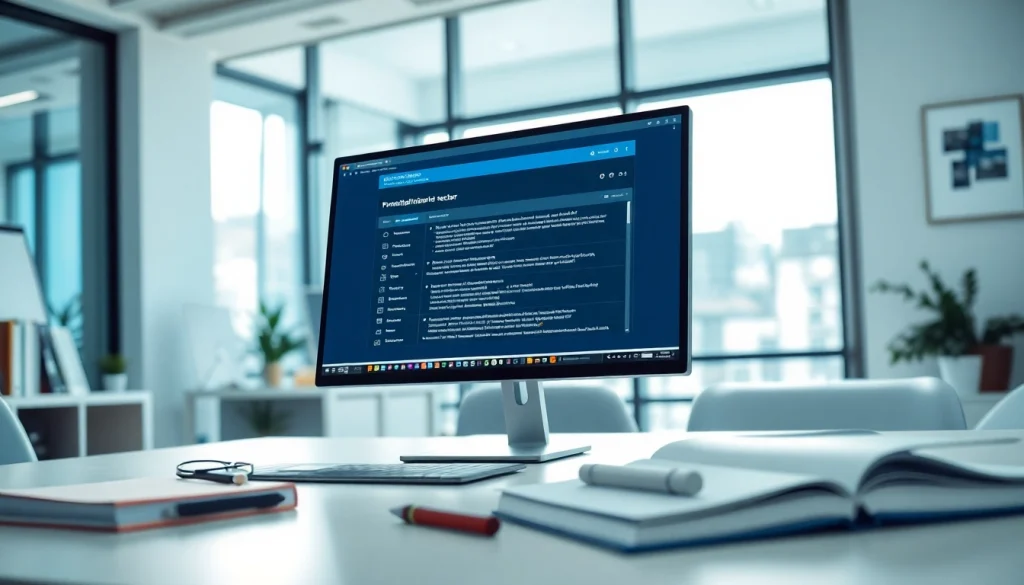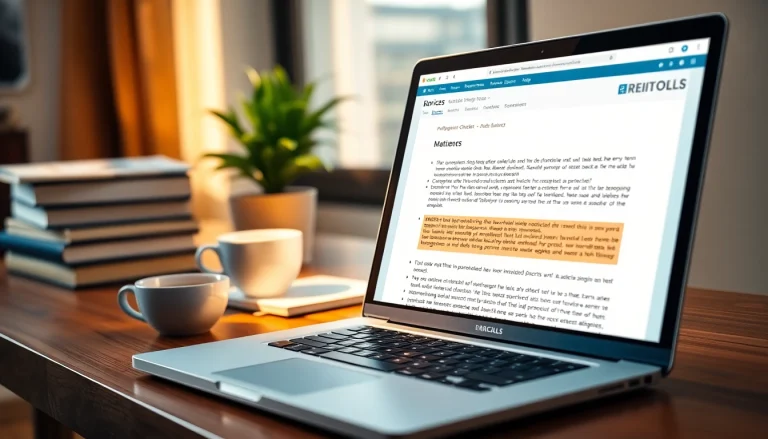
Understanding Plagiarism and Its Consequences
Plagiarism is often deemed the cardinal sin in the realms of academia and professional writing. Yet, it remains a pervasive problem that can have serious repercussions for students, writers, and academics alike. Understanding what constitutes plagiarism and its various consequences is critical for anyone engaged in the generation of written content. This awareness lays the groundwork for the effective utilization of tools like a plagiarism detector, aiding in the promotion of originality and integrity in academic and professional environments.
What Constitutes Plagiarism?
Plagiarism can broadly be defined as the act of using someone else’s work, ideas, or intellectual property without proper acknowledgment. This infringement can take various forms:
- Direct Plagiarism: Copying someone else’s work word-for-word without quotation marks or citation.
- Self-Plagiarism: Reusing one’s own previously submitted work without proper citation, often found in academic settings.
- Mosaic Plagiarism: Interweaving phrases or ideas from various sources without proper attribution—often referred to as “patchwriting.”
- Accidental Plagiarism: This occurs when an author neglects to cite their sources correctly or misquotes them due to ignorance or oversight.
Understanding these nuances is essential for writers, especially students, as this knowledge can prevent inadvertent misuse of sources, which may lead to severe academic penalties.
Impacts of Plagiarism in Academia
The impacts of plagiarism in the academic realm are profound and far-reaching. Students caught plagiarizing may face consequences ranging from failing grades to expulsion. Beyond the immediate academic repercussions, plagiarism undermines the integrity of educational institutions, erodes intellectual trust, and cultivates an environment devoid of creativity. Furthermore, it hampers personal growth; students who resort to plagiarism miss out on the opportunity to develop essential research, writing, and critical thinking skills.
Legal Repercussions of Plagiarizing
Plagiarism is not just an academic issue; it is also a legal one. Intellectual property laws are designed to protect the rights of creators, and violating these rights can lead to lawsuits and financial penalties. Authors, researchers, and students certain of their unique creations must take proactive measures to safeguard their work. This includes familiarizing themselves with proper citation methods and utilizing resources like plagiarism detectors to ensure their work is original and appropriately referenced.
Benefits of Using a Plagiarism Detector
With an understanding of plagiarism firmly established, we can delve into the benefits of utilizing a plagiarism detector. These tools have become essential for writers, offering solutions to promote originality and ethical writing practices.
Enhancing Originality in Your Work
One of the key advantages of employing a plagiarism detector is its ability to enhance originality in writing. By thoroughly scanning a piece of content for similarities with existing literature, these tools identify potential issues of copy infringement before submission. It not only safeguards the writer’s reputation but also fosters a culture of original thought. Writers using these tools can revisit their work, identifying segments that may inadvertently resemble existing sources and refining them for uniqueness.
Simplifying the Revision Process
Using a plagiarism detector simplifies the revision process significantly. It allows writers to review their work comprehensively in a streamlined manner. The software often provides a detailed report indicating areas that are flagged for potential plagiarism, enabling focused revisions to be made. This saves writers time and minimizes stress, allowing more attention to be directed toward content quality and coherence rather than the fear of unintentional plagiarism.
Building Trust with Educators and Employers
Utilizing a plagiarism detector is also a proactive way to build trust and credibility with educators and prospective employers. Submitting original work demonstrates a commitment to ethical standards and personal integrity, qualities that are highly valued in both educational and professional settings. In an era where information is widely accessible, showcasing originality can set one apart in competitive environments, enhancing academic success and career advancement.
Choosing the Right Plagiarism Detector
As the market for plagiarism detectors expands, choosing the right tool can be overwhelming. Understanding service types and key features is crucial in making an informed decision.
Comparing Free vs. Paid Services
One of the first decisions users must make is whether to opt for a free or paid plagiarism detection service. Free tools can be beneficial for casual users or students on a budget; however, they often come with limitations in accuracy and depth of analysis. Paid services, such as Grammarly and Turnitin, typically offer advanced functionalities including comprehensive databases against which to check submitted content, offering a higher degree of reliability. For academic or professional writing, investing in a robust plagiarism detector can prove invaluable, ensuring work adheres to high standards of originality.
Key Features to Look For
When selecting a plagiarism detector, users should consider several key features:
- Database Size: A larger database increases the likelihood of identifying plagiarized content.
- Report Clarity: Look for tools that provide clear reports with detailed analysis, helping users understand where similarities arise.
- Multiple File Format Support: Ensure the detector can analyze various document formats, including Word documents, PDFs, and online texts.
- Real-Time Detection: Some advanced tools can analyze text as it’s being written, offering immediate feedback.
- Multi-Language Support: For users writing in multiple languages, consider tools that support diverse linguistic structures.
User Reviews and Recommendations
Before settling on a plagiarism detector, prospective users should peruse reviews and testimonials to gauge performance and reliability. Checking user experiences provides insights into the tool’s capabilities and efficacy, helping users avoid subpar services. Many educational institutions also make recommendations based on their experiences, which can guide selected tools toward those known for their accuracy and user support.
How to Effectively Utilize a Plagiarism Detector
Knowing how to utilize a plagiarism detector effectively maximizes its benefits. Here we outline practical steps that facilitate a thorough and efficient plagiarism check.
Step-by-Step Guide to Running a Check
To run a check, follow these steps:
- Choose Your Tool: Select the plagiarism detection software that best suits your needs.
- Upload Your Document: Many platforms allow you to upload documents directly, or you may need to copy and paste your text.
- Initiate the Scan: After uploading, click the button to start the detection process.
- Review the Report: Once the scan completes, view the report and note areas flagged for similarity.
- Make Edits: Modify highlighted segments accordingly to improve originality.
Interpreting Results Accurately
Interpreting the results from a plagiarism detector requires a critical eye. The reports provided often categorize similarity levels into percentages, indicating how much of the content corresponds with existing material. A higher percentage does not always signal plagiarism; it may indicate common phrases or technical language prevalent in the field. Users should critically review flagged content and decide whether it requires modification based on its context.
Making Necessary Edits and Improvements
After reviewing the plagiarism report, the next step is to make necessary edits. This may involve paraphrasing certain phrases, adding citations, or even eliminating redundancies. The goal is to ensure that the content is not only original but also flows naturally. Taking the time to revise thoroughly reinforces the writer’s integrity and commitment to quality work.
Case Studies and Success Stories
Real-life examples of how plagiarism detectors have facilitated academic integrity can illuminate the value of these tools.
Real-Life Examples of Detected Plagiarism
Case studies reveal striking anecdotes illustrating how plagiarism detectors avert serious academic consequences. For instance, a group of university students facing failing grades because of plagiarized content managed to reverse their academic standing after using a plagiarism detector. The tool identified over 80% of their work not original, enabling the students to revise and submit original content to their professor. Their proactive approach underscored the importance of ethical writing practices and redefined their academic journeys.
Feedback from Educators on Tool Usage
Feedback from educators indicates that plagiarism detectors not only help uphold academic integrity but also provoke constructive conversations about originality and ethics in writing. Many educators have commended the tools for their ease of use and their role in minimizing the instances of unintentional plagiarism among students. This feedback has highlighted the growing importance of integrating plagiarism detection into academic curricula, enhancing student literacy regarding citation practices and the value of original thinking.
Measuring Improvement in Academic Performance
Studies have shown that students who consistently use plagiarism detectors report improved writing skills and a deeper understanding of content creation. Institutions that have adopted these tools see a marked decline in cases of reported plagiarism, indicating that these detectors serve as effective educational tools rather than mere policing mechanisms. Measuring academic performance improvement has suggested a rise in student engagement and confidence in producing original content, ultimately leading to a more honest academic environment.






